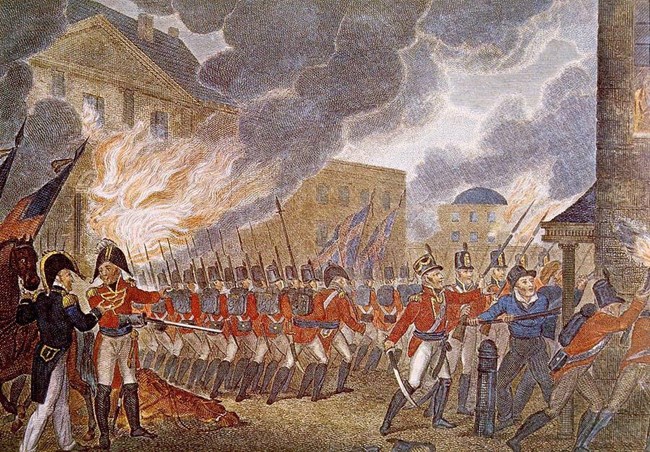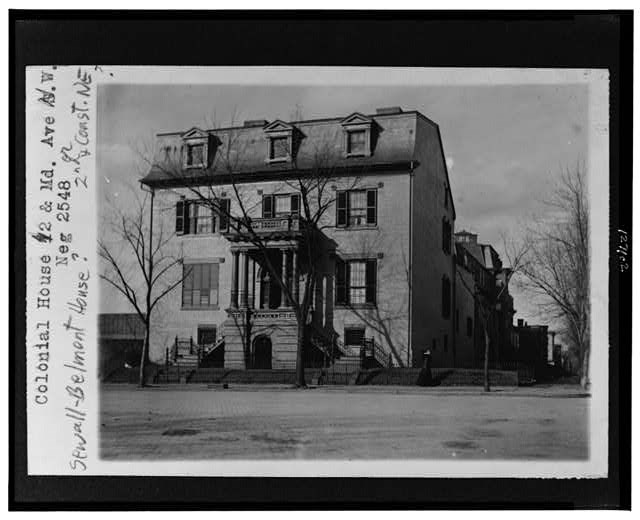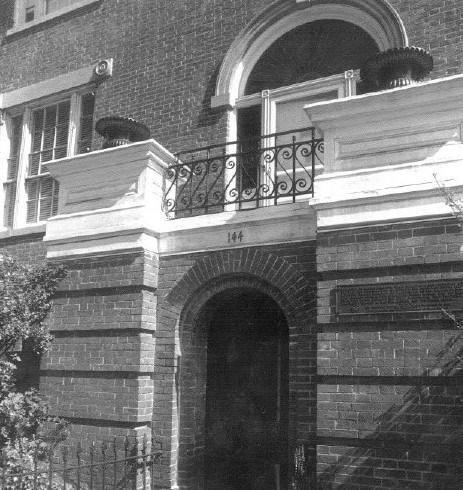
Tucked behind the U.S. Capitol, this 200-year-old house located at 144 Constitution Avenue, NE, stands as a testament to the nation's continuing struggle for equality. Belmont-Paul Women’s Equality National Monument tells the story of a community of women who dedicated their lives to the fight for women’s rights. The women of the National Woman’s Party, founded by Alice Paul, used innovative tactics and strategies to shape public opinion about the equality of women. Built on Capitol Hill in 1800, the brick federal-period house that today is Belmont-Paul Women’s Equality National Monument is among the oldest residential properties in Washington, D.C. The house is located on land used by the Nacotchtank, or Anacostans, for hunting and trading. The tract was included in a land grant to Cecil Calvert, the second Lord Baltimore, in 1632 by King Charles I of England as part of the colony of Maryland. 
Smithsonian Institution On August 24,1814, the British Army burned the house during the invasion of Washington. According to the claim that Sewall later filed with Congress, a group of Barney’s men retreating from the Battle of Bladensburg occupied the house and shot at the British troops advancing through the city. The attack killed several men as well as British General Ross’s horse. In retaliation, General Ross’s troops set fire to the house and it was destroyed. The house that now sits at 144 Constitution Avenue, NE is the one that was rebuilt on the spot by 1820. Robert Sewall died in the house that year. 
National Photo Company Collection (Library of Congress) In 1929, the Dales sold the house to the National Woman’s Party (NWP) to use as their headquarters. The NWP renamed the property the “Alva Belmont House” in honor of Alva Belmont, NWP President from 1920-1933 and its primary benefactor. Belmont donated thousands of dollars to the women’s equality movement and gave the NWP the ability to purchase the new headquarters. The house also functioned as a hotel and second home for some members up until the 1990s. 
National Woman's Party Photographic Collection Threats of losing the headquarters arose during construction of the Hart Senate Office Building in the 1960s. The NWP lobbied and fought to have the historic importance of the house recognized. As a result of their efforts, the property was listed on the National Register of Historic Places in 1972 as the Sewall-Belmont House and designated a National Historic Landmark in 1974. In 2016, the NWP donated the house and property to the National Park Service and Presidential Proclamation 9423 established the site as the Belmont-Paul Women's Equality National Monument. National Woman's PartyAlice Paul founded the National Woman's Party (NWP) in 1916 to fight for women’s equality. Under Paul’s leadership, the NWP initially focused on a push for a woman suffrage amendment to the U.S. Constitution. The NWP used many innovative tactics in their campaign, including an organized lobbying effort and picketing the White House. With the Nineteenth Amendment ratified in 1920, the NWP continued their efforts to win social, political, and economic equality for women. In 1923, the NWP first proposed the Equal Rights Amendment with the goal of constitutional recognition of women’s full citizenship under the law. Lobbying for the E.R.A. was an important aspect of the work that the NWP conducted in this headquarters. The NWP published their newspaper, Equal Rights, from this house to inform the nation about the cause of women’s equality. The NWP in the political landscapeClaiming Space |
Last updated: November 26, 2025
